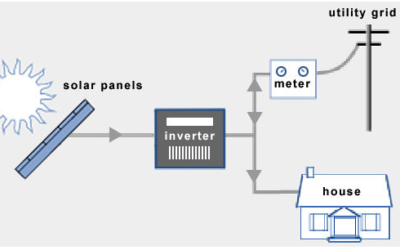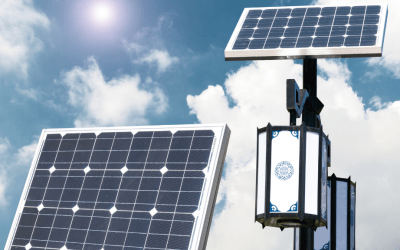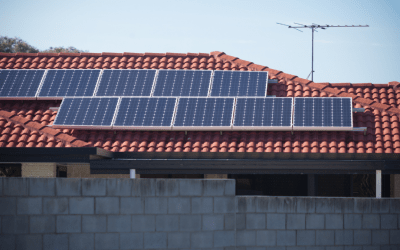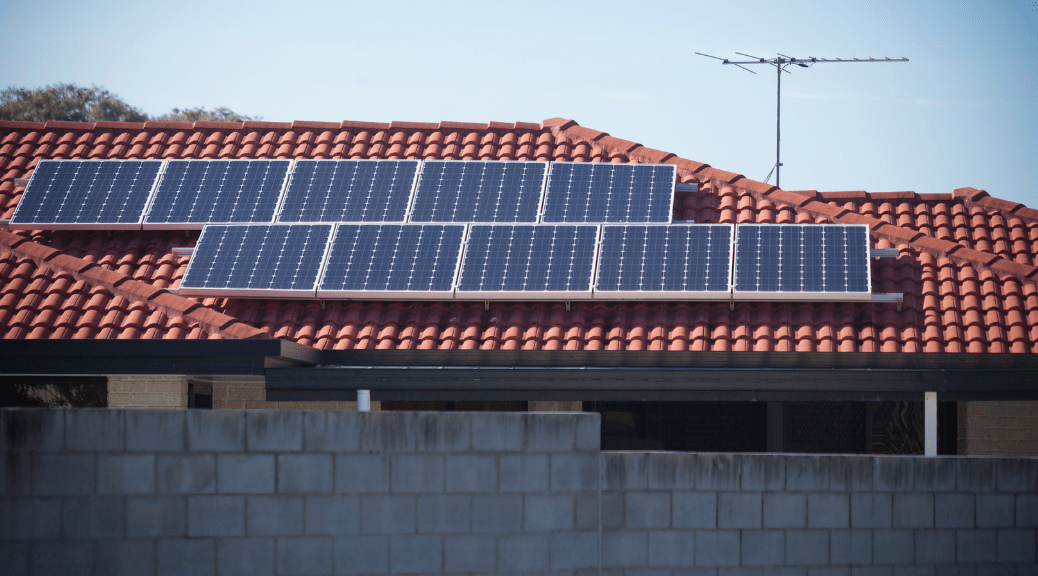Solar panels are increasingly being installed by homeowners wishing to take advantage of a system that produces green energy and insulates them from...

Solar Rooftop System
Solar Rooftop System
Solar panels are increasingly being installed by homeowners wishing to take advantage of a system that produces green energy and insulates them from rising energy prices. A rooftop solar power system can provide us with a clean and efficient source of energy for the home, saving us money and reducing dependence on the power grid. If you are worried about the amount of money spent in installation, just know that it will pay you back in just six to nine years in terms of savings in monthly bills. The useful life of a typical solar power plant is considered to be 25 years. By choosing solar, you make an investment you can be proud of and show your commitment to clean, renewable energy. In this report, we explain the common types of solar electric systems, the parameters on the basis of which one may choose the one that best suits their requirements, and other points that may concern the consumer.
Simply put, a solar rooftop photovoltaic (PV) system converts sun’s light energy into electricity energy through solar panels mounted on the rooftop of a building. This is how a solar panel works. As light hits the solar panels, the solar radiation is converted into direct current (DC). The direct current flows from the panels and is converted by the solar inverter into alternating current (AC) used by local electric utilities. The plant can be connected to the grid or can be designed to be off-grid.
Rooftop solar is helping consumers not only reduce their electricity bills, but also do their bit for the environment. It allows them to generate electricity for self-consumption and sell surplus, if any, to the discom, which in-turn pays them for the surplus energy generated over and above their own consumption as per applicable regulations.
Why Solar Rooftop?
- Your vacant rooftop space will be fruitfully utilised.
- Your electricity bills will be reduced.
- This will be your contribution towards reducing dependence on grid.
- This will also contribute in reduction of CO2 emissions.

Components that are required for rooftop solar installations are: photovoltaic panels (to convert solar sunshine into direct electricity), batteries to store electricity when power is not required and the sun is shining, inverters to convert direct current (DC) into AC, cables and other miscellaneous items like junction boxes, earthing, lighting arrestors and conduits. Panels account for about 50 per cent of the total cost.
Types of Solar Electric System
The common types of solar electric system are described here. Each has distinct applications and components.
1) Grid-connected
In this system the solar panels are connected to your local utility electrical grid. A grid-connected system consists of:
- Solar panels mounted on the roof
- An inverter to convert electricity from DC energy into AC
- A junction box that connects the solar-panel wiring to the breaker panel on the home
- A power meter that displays how much power the home produces and uses
2) Grid-connected with battery backup
Very similar to the grid-connected system, this system adds a battery bank to collect the power generated from the solar panels. Power stored in the batteries can be used during outages. The battery bank collects power produced by the solar panels, sends it to breaker box, and then into the house power system.
3) Off-grid or standalone
Off-grid systems are not tied to any utility power lines and are most common in remote areas where connecting to the utility grid is more expensive than purchasing an off-grid system. In off-grid systems, the solar electric system represents the home’s main source of power. Batteries store unused solar energy for use at night. Generators and other backup fuel sources are sometimes used as backup power when the solar power stored in the batteries is not enough to meet household needs.
How to Choose a System
Your home’s power requirements, roof type and solar resource will determine the type and size of the solar electric system. The right choice will depend on how much sunlight your area receives, your budget, how much conventional power you want to offset with solar power, and where the solar panels will be mounted. Please check all details at link given below: https://solarrooftop.gov.in/rooftop_calculator
Efficiency is an important parameter. This is a measure of the panel’s electricity output (in watts) compared to its surface area – basically how much solar energy is converted into electrical power, which is usually around 15 per cent to 20 per cent depending upon the sophistication of the panel. Generally, the higher the efficiency, the more power you can get from a given roof area, and you might have lower installation costs too. However, if you have plenty of roof space, you may find it more economical to buy cheaper panels with lower efficiency and just use more of them.
Top Solar Brands/companies
Tata Solar, Luminous Solar, Adani solar, Vikram solar, Moser Baer Solar, Sukam Solar, Havells Solar Solaredge, Microtek Solar, Exide Solar, Waaree Solar, Vikram Solar, Jakson Solar, Lubi Solar, Delta Solar Inverter, ABB Solar Inverter, Consul Neowatt Solar Hybrid Inverters.
What is the Cost?
The cost of a solar PV system will depend on many variables including the system size and the quality of components used. The approximate cost of a 1 kWp (kilowatt peak) rooftop solar PV project ranges from Rs 55,000 to Rs 85,000 for the state of Delhi – this includes installation charges but excludes cost of storage batteries (if required) and subsidy. The overall cost depends on the size of the project as rates are a little lower for a higher-size project. Prices of solar PV systems offered by various vendors can differ significantly.
Cost and Equipments for a 1 kW Off-grid Solar System
Solar PV module (250 watt peak [wp] x 4 [number of systems]): Rs 35,000–Rs 40000/-
PV module mounting structure (1 kW set): Rs 5,000
Tubular batteries (150 Ah x 2 [number of batteries]): Rs 22,000–Rs 28,000
Solar inverter (1.5 kilo-volt-amperes [KVA]): Rs 22,000–Rs 25,000
Cabling and other accessories: Rs 10,000
Transportation and installation: Rs 10,000
The above-mentioned costs will come with GST extra
Generating units per day = 4–4.5 units
(Total project cost of one off-grid rooftop solar system works out to Rs 60,000–Rs 90,000/kWp. Final cost will vary depending on quality of equipments/brands.)
Is 1 kW enough to run a house?
According to solar power system experts, one kilowatt (kw) of the solar system is sufficient for an average family of three to four people with only requirement of running a couple of tube lights, charger and fans. However, for a larger family or to run an air conditioner at home, a 3-5 kW solar system will be required at least.
Subsidy
There is a subsidy of 40 per cent (up to 3 KW) of maximum of the actual project cost from the ministry of new and renewable energy (MNRE), to be routed through discoms.
Renewable Power Net Import/Export Bill
The consumer can download the solar net-metering rooftop application form from the websites of DISCOMs. The consumer will receive a net import/export bill indicating either net export to the grid or net import from the grid. The consumer will settle the same as per existing norms.
The consumer shall be paid for net energy credits that remain unadjusted at the end of the financial year at the rate of average power purchase cost (APPC) of the distribution licensee for the respective year on provisional basis. The consumer shall settle the same as per existing norms. Discom will pay the consumer for surplus power generated which remain unadjusted at the end of financial year as per existing regulation.
What Is Net Metering?
In net metering, the excess solar energy is exported to the grid. This excess solar energy is deducted from the energy imported from the grid subject to certain conditions. The consumer pays for the net energy imported from the grid.
Maintenance
Warranties and Insurance
Most solar electric systems come with a five-year guarantee and 25-year warranty, but maintenance may be required to comply with a manufacturer’s warranty.
Proper maintenance of your system will keep it running smoothly. Most vendors recommend a yearly maintenance check by your installer. Solar panel may need to be cleaned in climates with infrequent rainfall.
The Tips that Matter
- Improve the energy efficiency in your home to save up to 30 per cent on your bills. You can do this by turning off appliances and using energy-efficient appliances/lights.
- Assess what energy you currently use and the system capacity you need (and can afford).
- Check if your roof faces the right direction. North-facing panels will produce to their full capacity.
- Ensure there are no trees, power lines or other structures shading your roof.
- Try to figure out your system’s payback time.
- Are you planning to install a storage battery, so you can store the solar-generated electricity for night time use? Check the latest calculations on home-battery storage and payback time.
- Get multiple quotes from installers to ensure you are getting a good deal.
- Are you planning to install a storage battery, so you can store the solar-generated electricity for night time use? Check the latest calculations on home-battery storage and payback time.
- Make sure the installer is accredited by the government and that the panel meets the required standards.
Some FAQs
- What is a grid-connected rooftop solar PV system?
In grid-connected rooftop, the DC power generated from the solar photovoltaic (SPV) panel is converted into AC power using a power conditioning unit (PCU) and it is fed to the grid, either of 33 kV/11 kV three-phase lines or of 440 volt/220 volt three-phase lines/single-phase line, depending on the capacity of the system installed at institution/commercial establishment or residential complex and the regulatory framework specified for respective states. These SPV systems generate power during the daytime which is utilised fully by powering captive loads and feed excess power to the grid. Where solar power is not sufficient due to cloud cover, etc., the captive loads are served by drawing power from the grid.
- Where are such plants installed?
Such SPV systems can be installed at the rooftops of residential and commercial complexes, housing societies, community centres, government organisations, private institutions, etc.
- How much roof area is required to set up the grid-connected rooftop solar PV system?
A 1 kW rooftop system generally requires 12 sq. metres (130 square feet) of flat, shadow-free area (preferably south-facing). Actual sizing depends also on local factors of solar radiation and weather conditions and shape of the roof.
- Do you need a contractor or is it a do-it-yourself (DIY) thing?
You need to install the system through a state nodal agency or an MNRE-empanelled agency (that is, contractor) for getting MNRE subsidy.

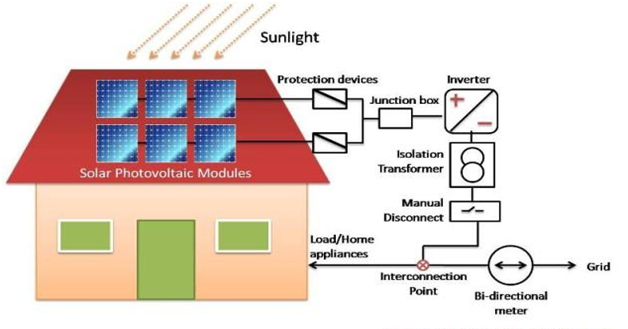
- What are the requirements for installing grid-connected rooftop solar PV power plants?
- A vacant roof area of 10–12 sq. metres for installation of 1 kWp SPV system
- A three-phases/one-phase supply service connection
- Mandatory safety precautions/features installed as per the norms
- A single bi-directional meter for export and import
- Standard equipment as per the norms of MNRE
- Ownership permission and necessary documents
- What is the annual energy generated from a 1 kW solar power plant?
The usual benchmark for energy generated from a 1 kW solar power plant is 1,500 units per annum. The amount of actual energy generated depends on both internal and external factors. External factors that are beyond the control of a solar power developer can include these:
- a) number of sunny days b) solar irradiation c) day temperatures d) air mass, and e) location.
Get all information you want to know
NIC has developed a simple but informative and useful application for the layman as well as the developers of solar power. Initially android version of the app has developed. The app namely ARUN (Atal Rooftop solar User Navigator) has got the following features.
- Basics:- Basics knowledge about the installation of solar rooftop in your house / premise
- Guidelines: Brief guide for how to install the solar rooftop system
- Rooftop Solar Calculator: It will give an estimate of installation based on different parameters like are, capacity or budget.
- How to install: Here you are submitting the interest request to MNRE and the MNRE approved agencies will contact you for further help
- Schemes & Policies: Here you can view the policies and schemes of the state of your choice
- List of SNAs & Agencies: You can view the MNRE approved agencies of the state of your choice
- FAQs: Frequently Asked Questions clear almost all doubts about solar rooftop installation
- Feedback: You can send your request / feedback to MNRE
Govt Advisory:
Ministry of New and Renewable Energy, Government of India is implementing Grid-connected Rooftop Solar Scheme (Phase-II). Under this scheme Ministry is providing 40% subsidy for the first 3 kW and 20% subsidy beyond 3 kW and up to 10 kW. The scheme is being implemented in the states by local Electricity Distribution Companies (DISCOMs).
Residential consumers willing to set-up a rooftop solar plant under MNRE scheme can apply online and get rooftop solar plants installed by listed vendors. For this, they have to pay the cost of rooftop solar plant by reducing the subsidy amount given by the Ministry as per the prescribed rate to the vendor. The process of which is given on the online portal of the DISCOMs. The subsidy amount will be provided to the vendors by the Ministry through the DISCOMs. Domestic consumers are informed that to get subsidy under the scheme of the Ministry, they should install rooftop solar plants only from the empanelled vendors of the DISCOMs following due process of approval by DISCOMs.
For more information, contact the concerned DISCOM or dial MNRE’s toll free number 1800- 180-3333. Click on https://solarrooftop.gov.in/grid_others/discomPortalLinks to know the online portal of your DISCOM.
Sources: http://mnre.gov.in, https://solarrooftop.gov.in
Solar Rooftop System
FAQs on Solar Photovoltaic System
FAQs on Solar Photovoltaic SystemA solar rooftop photovoltaic (PY) system converts the sun's light energy into electrical energy through solar...
Solar Rooftop System Buying Guide
Solar Rooftop System Buying GuideConsumer VOICE experts present you the most comprehensive solar rooftop system buying guide that tells about the...

